The Las Vegas Raiders have a relatively small 2022 draft haul without their first- and second-round picks, though general manager Dave Ziegler made sure to target three specific positions.
The new regime double-dipped for offensive linemen, defensive linemen and running backs, which addressed glaring needs in the trenches and crowded the backfield.
Even though the Raiders didn’t make their first pick until the third round, multiple rookies will likely make the 53-man roster and a few could carve out decent workloads.
Here’s a look at each role the 2022 Las Vegas Raiders draft picks could have this season.
Dylan Parham, offensive lineman
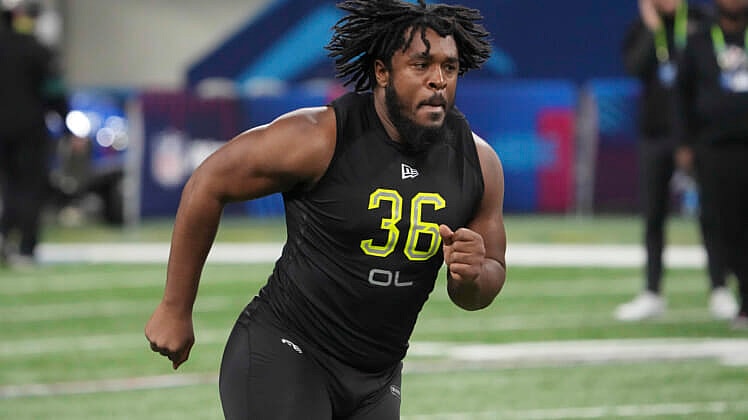
At Memphis, Parham played both guard positions and right tackle. During Senior Bowl week, he took reps at center, which likely boosted his stock. After Day 2 of April’s draft, Ziegler said the rookie third-rounder would compete at guard and center, which clearly puts Andre James on notice.
Nonetheless, Parham didn’t take any live snaps at center on the collegiate level. He’ll probably need time to make the transition, but the versatile lineman has the skill set with great awareness, a solid anchor and a keen understanding of schemes (both blocking and opposing defenses) because of his four-year experience in a starting role.
Related: How Las Vegas Raiders’ Dylan Parham can start in 2022
Parham would have a better shot to start at guard on the left or right. He could win a starting job if Alex Leatherwood opens the season at right tackle. But if the 2021 first-rounder plays right guard, the rookie would have to beat out John Simpson, who just needs to clean up his penalties, and experienced veterans in Denzelle Good and Jermaine Eluemunor for a first-string role.
Parham starts the 2022 season as the primary backup interior lineman, but he could move into a starting guard spot if Leatherwood plays right tackle.
Role: Primary backup interior lineman
Zamir White, running back
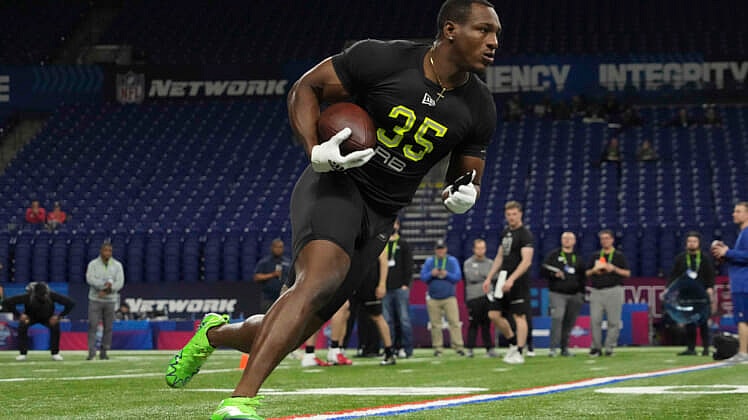
The Raiders declined running back Josh Jacobs’ fifth-year option and selected two ball-carriers who can stick their foot in the ground and run between the tackles. On top of that, the team signed Sincere McCormick, a highly productive tailback out of UTSA.
Ziegler may have put some early writing on the wall as it pertains to Jacobs’ future, but Kenyan Drake may have more to worry about heading into the upcoming campaign. Sure, he’s locked into $8 million (pre-June 1), but the coaching staff could fade him late in the 2022 season for White if the seventh-year pro isn’t effective in head coach Josh McDaniels offense.
Last year, Drake had an inconsistent role in former head coach Jon Gruden’s system. Now, McDaniels inherits him and adds a trio of young ball-carriers. As the first running back brought into the fold, White could work his way into a split with Jacobs if Drake becomes an exclusive third-down pass-catcher.
At Georgia, White didn’t see much action in the passing game, but that doesn’t necessarily mean he’s a subpar receiver. Though for now, Drake has the best hands among the Raiders running backs, which makes him a valuable No. 2 option.
White starts the season as the No. 3 option with a chance to take over for Drake, who’s likely to play elsewhere in 2023.
Role: Third-string running back
Nose tackle Neil Farrell Jr., nose tackle
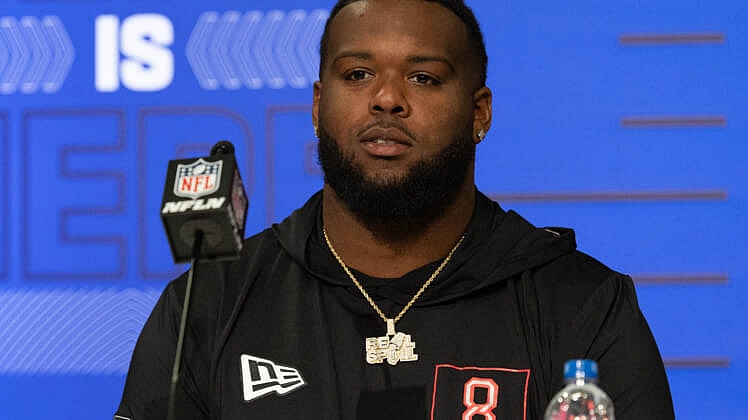
The Raiders re-signed Johnathan Hankins, who’s solid against the run and also drafted his potential replacement in Farrell. At LSU, the rookie fourth-rounder played nose tackle and flashed in his 2019 and 2021 terms with modest production in the other two campaigns (2018 and 2020).
Farrell uses his 6’4″, 330-pound body frame and heavy hands well in the trenches, which allows him to shed blocks and takedown ball-carriers. On occasion, he can apply pressure but does his best work on early downs.
Related: Grading the Las Vegas Raiders draft class
Farrell isn’t athletic or explosive, so he’s a little more than a space-eater who wins with brute strength right now. Expect him to learn behind Hankins with the chance to succeed the veteran next year.
Role: Backup nose tackle
Matthew Butler, defensive tackle
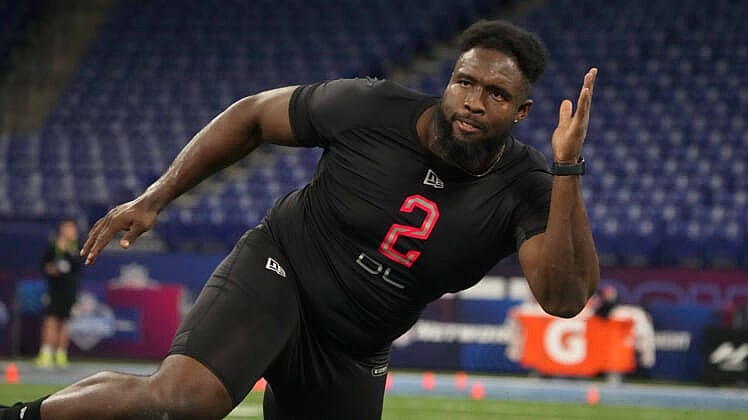
Don’t assume Andrew Billings or Vernon Butler makes the 53-man roster. Since 2019, the former has played in six games (72 defensive snaps), and the latter hasn’t moved the needle since he recorded six sacks and 12 pressures in that same year.
Billings (6’1″, 311 lbs) and Butler (6’4″, 325 lbs) are both big-bodied defensive linemen, who haven’t generated much push at the line of scrimmage on run or passing downs in recent years.
Butler, who played in multiple fronts at Tennessee, seems like an ideal fit in Patrick Graham’s varied scheme.
In his final collegiate campaign, Butler broke out with five sacks and 8.5 tackles for loss, showcasing his ability to play on all three downs. If he carries over that momentum through training camp, the 6’4″, 295-pounder will quickly become a favorite of the coaching staff.
Butler has a chance to crack the defensive line rotation in the upcoming season and play about 60 percent of the snaps as a discipline run defender and disruptor on passing downs. He could face stiffer competition if the coaching staff tries to salvage Clelin Ferrell’s tenure by permanently moving him inside, but the rookie fifth-rounder has the tools to contribute right away.
Role: Starting defensive end
Thayer Munford Jr., offensive lineman
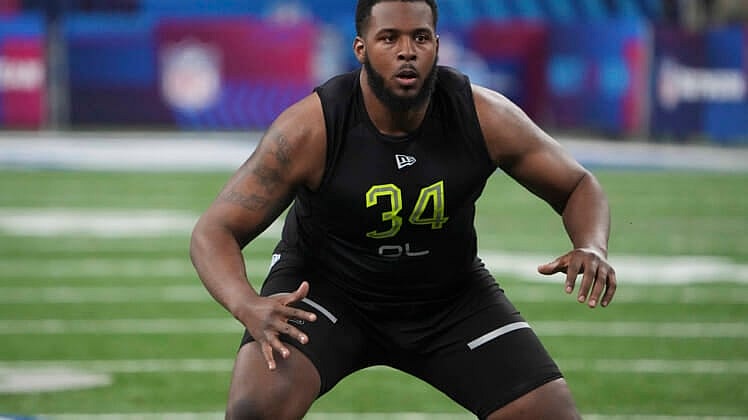
After three seasons at left tackle, Munford moved to left guard for the 2021 season. At 6’6″, 328 pounds, he has the size and strength to continue his transition inside, but the Ohio State product has to consistently establish his base so opposing defensive linemen cannot push him around.
With some coaching, Munford can clean up inconsistent footwork and make better use of his hands as a striker, but his lack of agility and delayed change of direction will put him in tough spots against high motor interior pass-rushers.
Related: Las Vegas Raiders schedule, roster
However, Munford can make the roster and fill in as a spot starter at guard. He has the length (35⅛” inch arms) to stand up defenders but needs to capitalize with some leverage. The Raiders will likely stash him to the practice squad, but his position flexibility can help him squeak by final roster cuts if an offensive lineman goes down with an injury.
Role: Practice squad (third-string guard in case of injury)
Brittain Brown, running back

Clearly, McDaniels has a type when he targets running backs. Like White, Brown has a physical run style and the ability to accelerate while in an open lane. He doesn’t have much pass-catching production or experience in pass protection and also played within a committee through his collegiate years at Duke and UCLA.
Related: Former Las Vegas Raiders’ president accuses team of bad conduct
If the Raiders use Brown in the upcoming term, they would probably feature him in the red zone or short-yardage situations. He has a compact frame (6’1″ 205 lbs) that can absorb hits. However, the former Bruin doesn’t have a skill set that separates him from the pack.
Role: Practice squad
College statistics are provided by cfbstats.com.
Maurice Moton covers the Raiders for Sportsnaut. You can follow him on Twitter at @MoeMoton.